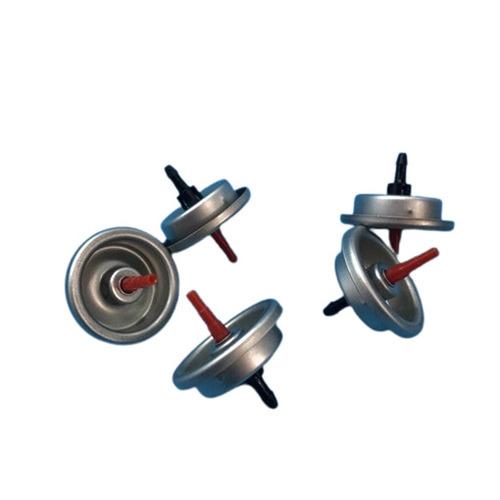Bluefirecans Guide: Which Packing Steps Protect Small Canisters During Transport

A light pack changes the way you move and think on the trail, and the fuel choice is central to that calculation. For many hikers seeking to shave ounces without sacrificing a hot meal the 100 Gram Fuel Canister represents a carefully balanced option that blends compactness with predictable performance. Its small form fits minimalist stoves and streamlined kits while still providing enough usable heat for quick boils and efficient cooking routines, which is why it has become a serious consideration for ultralight enthusiasts and gear shops alike.
First the practical case. Ultralight trips prize every gram, but users still expect reliable results when boiling or simmering. A small canister works well with compact stoves designed for low weight and low pack volume. When paired with the right pot and a simple windscreen a single small canister can deliver a surprisingly complete cook sequence for solo hikers or pair teams who plan meals with speed in mind. The pairing of fuel and stove matters more than the label alone and that matching is what turns a minimal setup into a dependable one.
Performance predictability is an advantage for lightweight hikers who cannot afford surprises. Small canisters that are filled and packaged consistently deliver similar run times across units so hikers can plan meals and navigation without carrying heavy spares. Suppliers who publish valve types and handling notes simplify the choice for retailers and end users who want to assemble compact kits that work together out of the box. That transparency reduces returns and builds trust in niche communities where word of mouth moves quickly.
Pack space and handling count as much as raw weight. A compact canister tucks into a kitchen roll or a side pocket and fits inside a stove cozy with room to spare. For multi day trips where every item must earn its spot in the pack, that compact footprint frees space for a water filter, an extra layer, or a small repair kit. In practical terms it turns a pack from cramped to manageable with only a small concession in burn capacity when trips are planned around efficient cooking habits.
Cooking technique multiplies the value of a small fuel unit. Rapidly bringing liquid to a boil and dropping to a modest simmer uses less fuel than repeated full power cycles. Using a snug lid and a pot cozy reduces boil times and keeps temperatures stable for finishing. These simple habits matter far more than owning a larger canister when the intent is to move light and move far. For groups that coordinating meal tasks are feasible the savings multiply because one boil can serve several mouths before a simmer finishes the dish.
Cold weather and wind influence how any fuel performs. Small canisters are sensitive to low ambient temperatures because vapor pressure declines with temperature. That means planning modest warm up techniques like keeping spare canisters inside insulated pockets and cooking in sheltered spots. For trips that cross colder zones a mixed approach often works well: a compact canister as the main lightweight unit plus a modest backup for base camp tasks when stable heat is more important than every saved gram.
Sustainability and circular thinking are part of the ultralight conversation. Choosing a canister size that gets used up on a typical outing reduces partially used leftovers that are awkward to store and dispose of. Brands and retailers that include clear end of life guidance and simple disposal notes help hikers avoid accumulating half used cans on long trails. That kind of practical stewardship appeals to outdoor communities that prioritize leave no trace ethics and local recycling efforts.
Retailers and outfitters benefit when they curate coherent ultralight kits. Bundling a compact canister with a compatible stove and a short one page handling card makes the buying decision straightforward for people new to ultralight practice. For online listings clear photographs of valve type and packing notes reduce returns and complaints. For brick and mortar stores a small demo station that shows the stove and canister pairing makes the product feel tangible and reduces the friction of a minimal setup.
Supply chain reliability has become part of the purchase calculus. Small specialty canisters are most useful when retailers can keep shelf stock consistent. Suppliers who publish valve compatibility, packing procedures, and handling guidance help procurement teams avoid mismatches and damaged shipments that quickly erode the advantage of a small footprint product. Transparent communication about lead times and packing also helps small shops plan seasonal assortments without over buying.
Field feedback closes the loop. Brands and shops that solicit reports from guides, outfitters, and experienced customers learn which stoves pair best, which caps resist damage, and which packing templates minimize handling issues. That real world input informs selection and helps vendors refine kits to better match actual use patterns rather than lab assumptions. Over time those iterative improvements are what make compact fuel options trusted rather than merely novel.
If you are assembling an ultralight catalog or packing your first minimalist kit compare canister notes and valve types, test a stove pairing at home with the cookware you will actually carry, and include a modest spare only when resupply options are uncertain. Small changes to cooking routine and packing choices typically deliver more payoff than carrying larger fuel loads. For product details and practical handling notes that help you match stoves and canisters when creating lightweight kits consult the supplier product pages such as the small canister section which gathers pairing suggestions, valve notes, and packing guidance at https://www.bluefirecans.com/product/ to make planning and procurement easier.
- Art
- Causes
- Crafts
- Dance
- Drinks
- Film
- Fitness
- Food
- Παιχνίδια
- Gardening
- Health
- Κεντρική Σελίδα
- Literature
- Music
- Networking
- άλλο
- Party
- Religion
- Shopping
- Sports
- Theater
- Wellness
